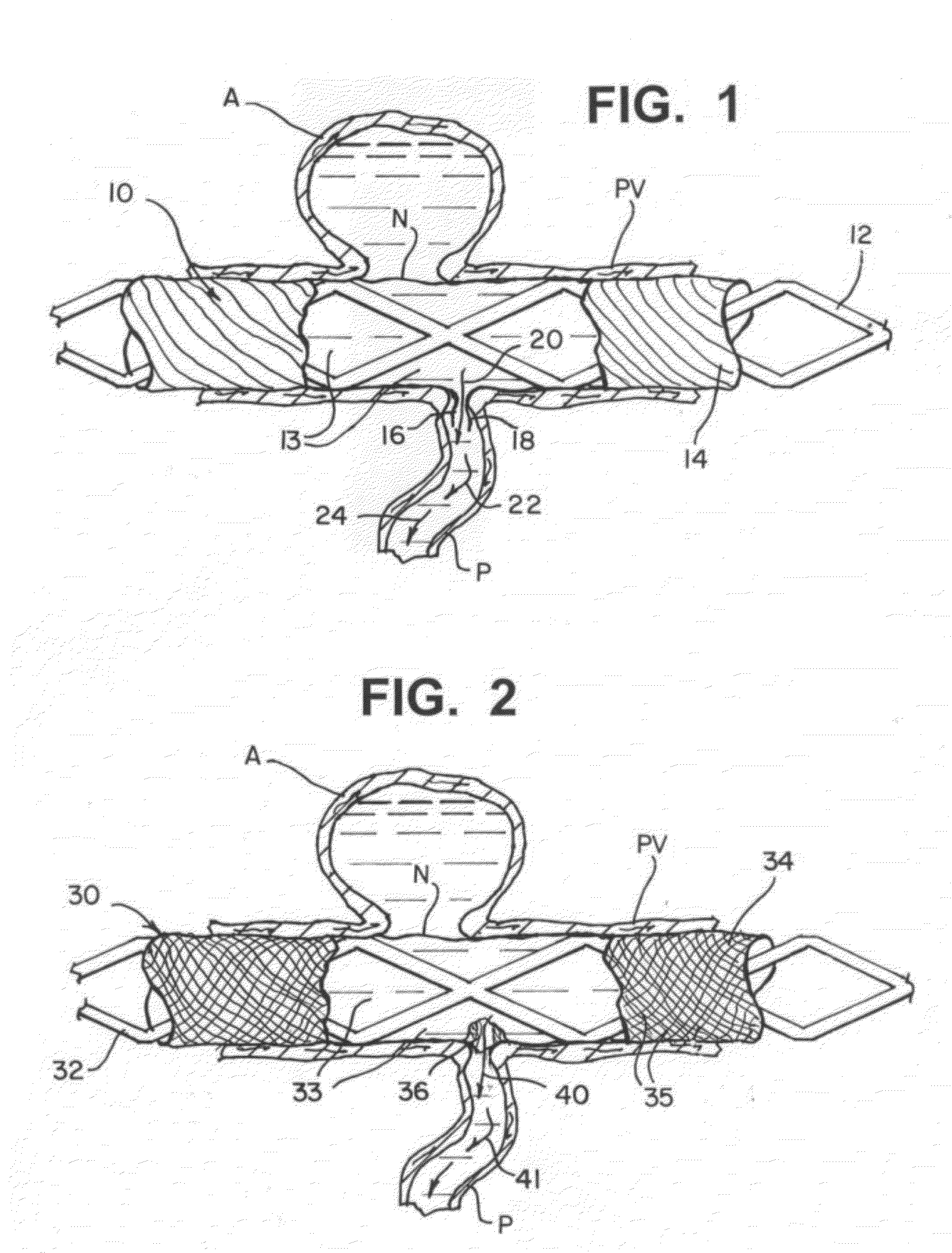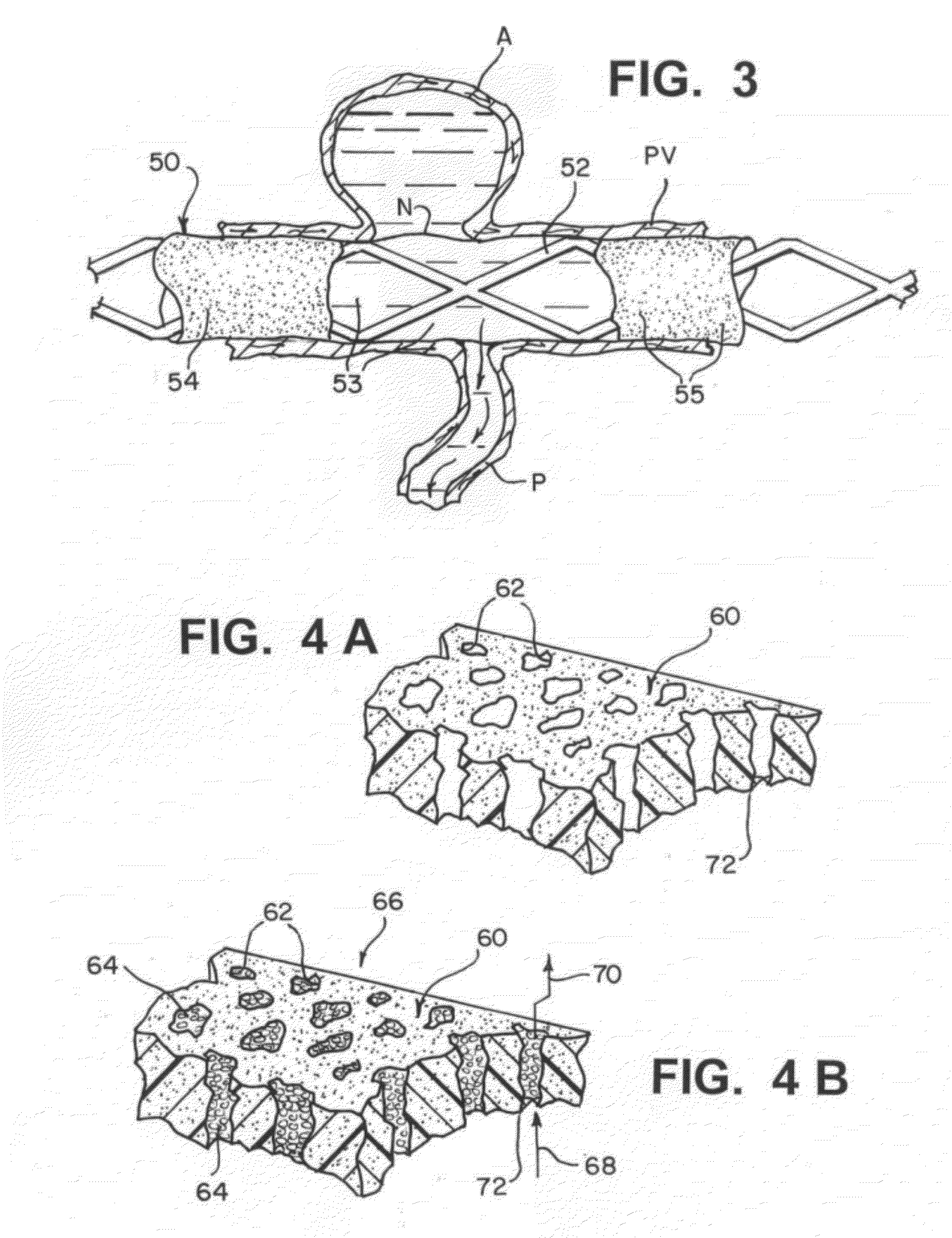Modifiable occlusion device
a technology of occlusion device and occlusion chamber, which is applied in the field of occlusion device, can solve the problems of vascular disorders and defects such as aneurysms and other arteriovenous malformations that are especially difficult to treat, and are difficult and often risky to surgically treat cranial vasculature defects, and increase the risk of aneurysm rupturing,
- Summary
- Abstract
- Description
- Claims
- Application Information
AI Technical Summary
Benefits of technology
Problems solved by technology
Method used
Image
Examples
Embodiment Construction
[0029]This invention may be accomplished by an occlusive device suitable for endovascular treatment of an aneurysm in a region of a parent vessel in a patient, with at least one type of supporting structure, such as metallic struts or porous foam, and at least one type of frangible material supported by the structure. The structure has a fixed porosity and has dimensions suitable for insertion into vasculature of the patient to reach the region of the aneurysm in the parent vessel. The frangible material initially provides a substantial barrier to flow through the frangible material and is capable of at least one of localized rupturing and localized eroding, in the presence of a pressure differential arising at an ostium of a perforator vessel communicating with the parent vessel, within an acute time period to minimize ischemia downstream of the perforator vessel.
[0030]When considering the arterial system as a non-compressible fluid piping system, the aneurysm is a dead leg which d...
PUM
 Login to View More
Login to View More Abstract
Description
Claims
Application Information
 Login to View More
Login to View More - R&D
- Intellectual Property
- Life Sciences
- Materials
- Tech Scout
- Unparalleled Data Quality
- Higher Quality Content
- 60% Fewer Hallucinations
Browse by: Latest US Patents, China's latest patents, Technical Efficacy Thesaurus, Application Domain, Technology Topic, Popular Technical Reports.
© 2025 PatSnap. All rights reserved.Legal|Privacy policy|Modern Slavery Act Transparency Statement|Sitemap|About US| Contact US: help@patsnap.com



